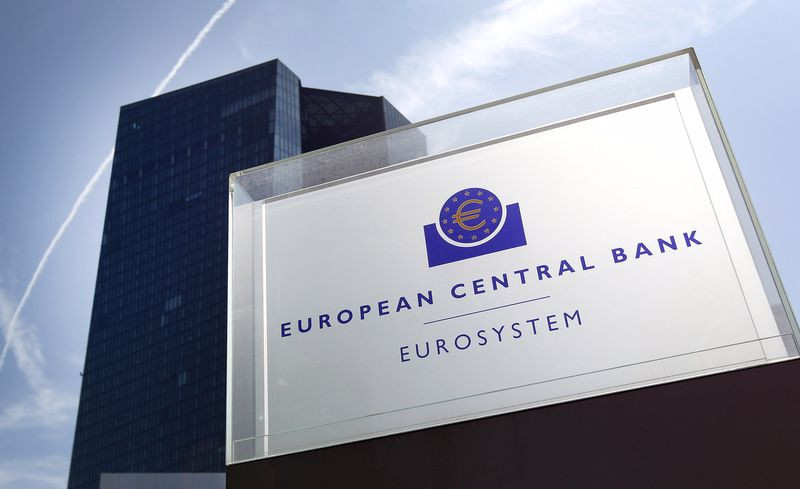
Global markets are leaving behind a turbulent May, but investors do not have to hope that June will be less volatile.
Traders are still concerned about the possibility that the continued acceleration in consumer price growth, combined with the tough policies of leading central banks, could seriously slow down global growth.
It is assumed that at its next meeting on June 9, the European Central Bank will decide to stop buying bonds around the middle of the year and will probably give hints that a rate hike will follow at the July meeting.
Meanwhile, the next increase in the Federal Reserve rate by 50 basis points, following the results of the FOMC meeting, which will be held on June 14-15, looks like an almost solved issue.
In addition to the verdict on monetary policy, the US central bank will publish the so-called "dot chart", which displays the timing of interest rate hikes.
Although the "dots" are not promises or commitments, they give investors an idea of what the central bank's policy will be in the future.
The S&P 500 index, which fell into the bearish trend zone on May 19, having rolled back by more than 20% from the record peak in January, ended the past month almost unchanged, with an increase of 0.01%.
"There are too many concerns now that do not allow the market to demonstrate a V-shaped recovery," BMO Family Office specialists noted. In their opinion, the market will be trading in the range for some time due to the uncertainty around the fighting in Ukraine, the prospects for the global economy, inflation, as well as the Fed's policy.
Traders have put in quotes an increase in interest rates by half a point at the FOMC meetings this month and next, but the prospects after that are vague.
As Kansas City Fed President Esther George noted last Monday, policymakers are not sure how quickly the increase in borrowing costs will affect demand. And this will undoubtedly be the subject of an upcoming debate that will determine how high and how far the rate hike will eventually go.
Not having much confidence in when monetary conditions might soften, FOMC officials began to lay out a wide range of positions on what might happen after the upcoming rate hikes, from a direct pause in the increase in borrowing costs this fall to calls for an aggressive series of half-percent increases in September, November and December.

The head of the Atlanta Fed, Rafael Bostic, said that a pause may be the best course of action in September to assess the impact of the Fed's tightening policy on the economy and inflation.
Meanwhile, St. Louis Fed President James Bullard wants to bring the interest rate to 3.5% by the end of the year, which will require a half-point rate hike at all five remaining Fed meetings this year.
"Fifty basis points is a good plan at the moment. As always, we should pay attention to the incoming data on the economy and inflation. In this case, you can never make ironclad promises, but we will see how everything goes," he said.
Also Bullard said the decline in the US stock market was not unexpected and was partly a reaction to the increase in interest rates.
The S&P 500 has fallen more than 14% this year.
"There have been a lot of revaluations in the markets. Part of it has to do with the Fed, but part of it may also have to do with what prices were like before the recession happened. One would expect that when rates rise, all these assets, trillions of dollars around the world, should be revalued," said the head of the St. Louis Fed.
Member of the Board of Governors of the Federal Reserve Christopher Waller, in turn, advocates raising interest rates in stages by half a percent until inflation returns to the goal of the US central bank.
"I do not rule out raising the rate by 50 basis points until I see that inflation is approaching our target of 2%," he said.It was Waller's comments that allowed the US currency to regain its composure, for which the past month turned out to be no less dramatic than for the stock market.
In mid-May, the greenback reached an almost two-decade high above 105.00, but then sank to a monthly low around 101.30.This allowed some experts to assume that the best times for the USD are already over.
However, most analysts are afraid to call for a complete cessation of the recent strengthening of the dollar. This is partly a reflection of the bets made at the end of 2021 that the growth of the US currency will gradually come to naught, and the increase in the Fed's key rate has already been taken into account. However, those predictions turned out to be wrong.
On Tuesday, the greenback broke a three-day losing streak. The USD index rose 0.3% to 101.76, showing the best one-day gain in almost two weeks. Nevertheless, it fell by 1.4% in May, marking the worst monthly drop in a year.

The weakening of the US currency to almost a five-week low earlier this week led to expectations that inflation in the United States showed signs of a peak, which will allow the US central bank to suspend its cycle of raising interest rates after two more rounds in June and July.
Armed with this idea, investors sold the dollar and bought stocks.
However, the situation changed overnight. The greenback strengthened in all directions on Tuesday, and the key Wall Street indices fell by 0.4-0.7%, as a sharp rise in oil prices and Waller's hawkish comments brought market participants back from heaven to earth.
Admittedly, you need to have a fair amount of optimism to believe that price pressure will decrease significantly from current levels.
Labor shortages, rapidly rising prices for energy and food, as well as continuing disruptions in supply chains promise the United States many months of persistently high inflation.
On Tuesday, oil quotes jumped to $120 per barrel for the first time since the beginning of March, reacting to the decision of the European Union on a partial embargo on Russian hydrocarbons, which implies a ban on oil supplies by tankers.
Adding fuel to the fire is the release of the Chinese economy from quarantine, which heats up expectations of an increase in demand for raw materials.
"Energy prices also play a role, because they have a real impact on people's willingness to spend money. Consumers notice higher prices in grocery stores," BMO Family Office specialists noted.
The results of the meeting held yesterday between US President Joe Biden and Fed Chairman Jerome Powell put pressure on risky assets and supported the dollar.
Biden actually provided a full carte blanche to Powell in the fight against inflation, allowing to use all the tools available in the arsenal of the central bank.
Powell was officially sworn in last week to begin his second four-year term as head of the US central bank.
There is little doubt that he will do his best to justify the trust placed in him, especially given the midterm congressional elections that will be held in November and which the Democrats hope to win.
"Now is not the time to engage in a very precise adjustment of inflation. We need to achieve a convincing reduction in inflation, and until then we will continue," said Powell.
It is obvious that the central bank faces a difficult task to contain demand in the economy sufficiently to curb inflation without causing a recession. However, the belligerent attitude of the Fed allows the greenback to stay afloat.
"The last few days seem to suggest that the tightening cycle in the US is based on a stronger growth story than in Europe, and speculation around the Fed's September pause has subsided so far. Ultimately, we believe that all this lays the foundation for a period of gradual recovery of the dollar," ING strategists noted.
It is too early to talk about the long-term peak of USD, Westpac analysts believe.
They predict that the greenback will fluctuate between 101 and 105 for some time before its bullish trend resumes.
"The ECB's aggressive rate hike by 180 bps is calculated until the end of 2023, about the same as that of the Fed, but it is difficult to imagine the European Central Bank moving in step with its US counterpart," Westpac reported.

The ECB significantly deviated from the Fed's course, noting that it will not begin to get rid of bonds on its balance sheet until next year.
This was recently stated by the head of the central bank of the Netherlands, Klaas Knot. "This means that the inflated balance sheet will remain so for some time," he said.
In addition, the ECB is trapped in the hybrid nature of the eurozone. The currency and monetary policy of the region are the same, but each of the 19 national governments issues its own sovereign debt.
During the pandemic, these countries actively borrowed money, and the ECB bought most of the bonds. This is a kind of stimulus that the central bank cannot easily curtail without creating problems for the weakest members of the currency bloc.
Recently, pressure has been mounting on the ECB to take the most aggressive stance on rate hikes in its history to combat record inflation.
Money markets are steadily increasing their expectations for an ECB rate hike. Investors are now predicting that the cost of borrowing in the eurozone will rise by 115 basis points this year, compared with 110 basis points last week.
Inflation in the eurozone rose to a record 8.1% in May from 7.4% in the previous month, helped by rising energy and food prices due to the ongoing Russian-Ukrainian crisis.
"These data confirm the need to take the first step in raising rates. My baseline is 25 basis points in July, but I am ready to talk about 50 basis points," said Peter Kazimir, a member of the ECB Governing Council.
Another ECB representative, Robert Holzmann, pointed out that record high inflation in the eurozone supports the view that a 50 basis point rate hike will be required.
The ECB has not raised rates since 2011 and has kept the base rate in negative territory since 2014. Raising rates by 50 basis points will be the first such step for the central bank.
However, the ECB's room for maneuver is limited, since a strong rate hike is fraught with an expansion of bond spreads, which is called fragmentation.
The single currency came under pressure after the release of data that reflected a jump in inflation in the eurozone to a record level, which raised concerns about the prospects for economic growth in the region.
At the same time, hopes that inflation may have reached its peak are being undermined by oil prices, which have just recorded growth for the sixth consecutive month, which was the longest such streak since 2011.

"The dollar has risen against the backdrop of rising oil prices, and this turns out to be a more significant factor, and the risk of recession is seen as more significant in Europe than in the United States," analysts at Equiti Capital said.
The strengthening of the greenback on a broad front led to the fact that the EUR/USD pair fell by 0.4% on Tuesday, to 1.0733, and closed in negative territory.
On Wednesday, the euro retreated even more from the monthly peak reached on Monday at 1.0787, while the dollar gained weight amid the continued sell-off of stocks.
Key Wall Street indexes remained negative on the first day of summer due to concerns about global inflation. In particular, the S&P 500 is losing about 0.6% on Wednesday.
Atlanta Fed President Rafael Bostic said that his opinion that the Fed will take a pause in its rate hike cycle in September should not be considered as an assumption that the central bank will come to the aid of the markets. He also added that he would be completely comfortable with continuing to raise rates if inflation did not decrease significantly. Meanwhile, US Treasury Secretary Janet Yellen said they cannot rule out further inflationary shocks as oil prices remain high.
The greenback benefited from the flight from risk and continued to develop Tuesday's growth. After a short-term drawdown to the level of 101.30, dollar bulls seized the initiative, and now the USD index is winning back the mark of 102.00.
The US currency was supported by a strong ISM report on business activity in the US industry. The indicator rose to 56.1 points in May from 55.4 points recorded in April. Analysts predicted a decline in the indicator to 54.5 points.
"Economic data from the United States continue to support the course of tightening the Fed's policy and offer a long-term bullish argument in favor of the US dollar. The USD index may move into the 103.00 zone ahead of the FOMC meeting on June 14-15," ING strategists said.
At the same time, they do not see any good reasons for the EUR/USD pair to return to the 1.1000 mark and above.
"In the end, the sharp rise in energy prices is increasingly felt in Europe, and the deterioration of the terms of trade in the eurozone has damaged the medium-term fair value of the euro," analysts noted.

A negative factor for the euro was added by the index of business activity in the field of industrial production of 19 eurozone countries, which, according to the final assessment, fell to 54.6 points in May from 55.5 points in the previous month.
A separate report showed that in April retail sales in Germany fell by 5.4% on a monthly basis with an expected decline of 0.2%. The indicator sank to the lowest values since February last year. Given that inflation in the country in May rose to the highest level in almost half a century, this is a rather alarming signal for the "locomotive" of the eurozone and a serious reason for the ECB to think that accelerating the pace of monetary policy normalization, following the example of the Fed, can only worsen the health of the region's economy.
"The euro failed to benefit from higher-than-expected inflation data in the eurozone. In order for the single currency to find additional support, there must be growing signs that the ECB will raise rates faster and that it may even be considering steps of 50 bps. However, there are no signs yet that this will happen. A gradual increase in rates still seems to be the choice of the central bank's actions," Commerzbank analysts said.
Investors are now assessing the further likely steps of the ECB. Analysts believe that in the near future the central bank will be cautious, and its further actions will depend on the macroeconomic forecasts that the central bank will publish at the June meeting.
"A significant revision of the ECB's short-term inflation strategy is likely after new macroeconomic forecasts are published in June," analysts at RBC Capital Markets believe
On Wednesday, the EUR/USD pair was again under bearish pressure and fell below the 1.0700 mark.
"A daily close below 1.0700 will indicate a possible reversal of the euro and the loss of some of the points gained recently. Resistance is at 1.0740-1.0750, and then at Monday's high of 1.0787," Scotiabank economists noted.
The euro continues to fall against the US dollar for the second consecutive trading session after continuous growth for three days, which stalled on the approaches to the 1.0800 mark.
"Our basic forecast for EUR/USD for the year ahead was that the pair could reach the 1.0800 mark, and this would be an ideal place to form a "bottom". In March, the pair fell to 1.0800, after which it rose to 1.1180. Then it dropped back to 1.0800 in mid-April. The break below led to testing of five-year lows, where the euro found some support due to the alignment of the two trend lines," Bank of America strategists said.
"At the moment, we do not have enough bullish signals to say that the euro will turn significantly higher. An optimistic scenario would be a return to the rally to retest the 1.0800 area, which was a support and turned into resistance. Until this happens, we assume that any EUR/USD growth will be sold," they added.





















